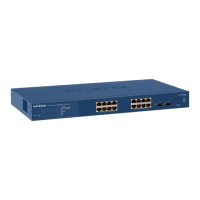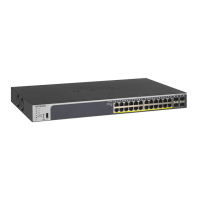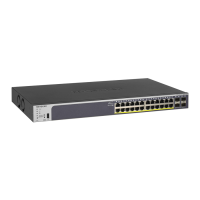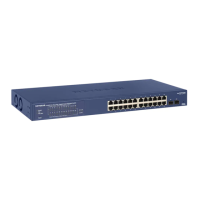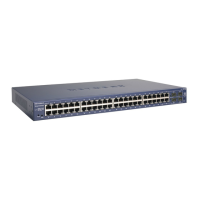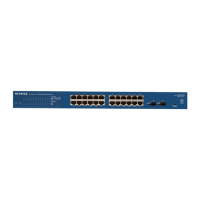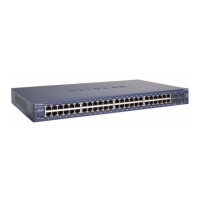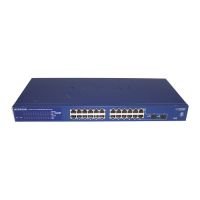247
GS716T and GS724T Gigabit Smart Switches
To configure a remote log server
1. To add a remote syslog host (log server), specify the settings in the following list and
click Add.
• Host Address. Specify the IP address or host name of the host configured for syslog.
• Port. Specify the port on the host to which syslog messages are sent. The default port
is 514.
• Severity Filter. Use the menu to select the severity of the logs to send to the logging
host. Logs with the selected severity level and all logs of greater severity are sent to
the host. For example, if you select Error, the logged messages include Error, Critical,
Alert, and Emergency. The default severity level is Alert (1). The severity can be one
of the following levels:
• Emergency (0): The highest level warning level. If the device is down or not
functioning properly, an emergency log is saved to the device.
• Alert (1): The second highest warning level. An alert log is saved if there is a
serious device malfunction, such as all device features being down.
• Critical (2): The third highest warning level. A critical log is saved if a critical
device malfunction occurs, for example, two device ports are not functioning,
while the rest of the device ports remain functional.
• Error (3): A device error has occurred, such as if a port is offline.
• Warning (4): The lowest level of a device warning.
• Notice (5): Provides the network administrators with device information.
• Informational (6): Provides device information.
• Debug (7): Provides detailed information about the log. Debugging should only be
entered by qualified support personnel.
2. To delete an existing host, select the check box next to the host and click Delete.
3. To modify the settings for an existing host, select the check box next to the host, change the
desired information, and click Apply.
4. Click Cancel to cancel the configuration on the screen and reset the data on the screen to
the latest value of the switch.
The Status field in the Server Configuration table shows whether the remote logging host is
currently active.
